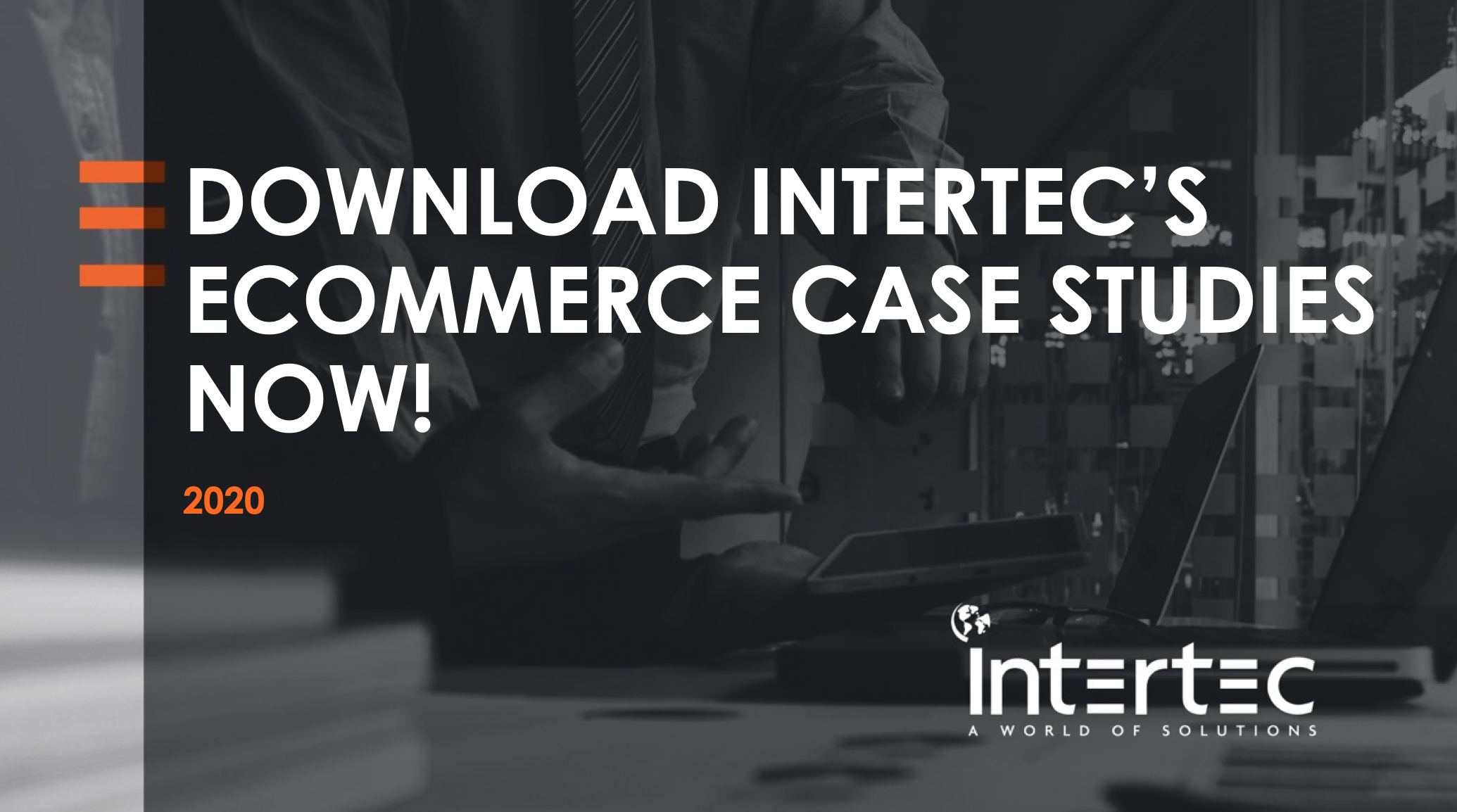The e-commerce sector is on fire right now. Between the virtualization of sectors, the general move to online everything, and now the added strain of entire workforces being moved to a work-from-home model as a result of the coronavirus—the online retail world is thriving.

Whether you’re a brick and mortar concern looking to expand into e-tailing to further your reach, an existing brand moving to a direct-to-consumer model, or a complete newcomer just getting your feet wet, there’s something we bet you haven’t thought about yet. The strain on IT that going virtual creates.
From added security concerns that your loss prevention team has never dealt with to the ebb and flow of website traffic and the havoc it can wreak on your infrastructure, there are many aspects of creating a web presence you’ll need to consider. If you want your foray into e-commerce to be a success and elevate your business to the next level, this post is for you.
We’ve come up with a trim list of the top 5 IT challenges faced by e-commerce companies, the first two are present moment concerns, while the remaining three are more future-oriented. Take them to heart and do what you can to mitigate these concerns and you’ll be that much closer to the dream of running a thriving online retail presence.
Before We Dive In, Some E-commerce Statistics
What do we mean by e-commerce? Simple, any company with a web presence that does business via that presence. So anyone you can buy products directly from, or a reseller of those products, or even a store you used to frequent before the pandemic that is now selling their wares online. By this definition, e-commerce comprised approximately 10.5% of all retail in the US for 2019.
That doesn’t seem like the huge presence we’re talking about, but keep in mind that the definition of “retail” here includes sectors like the auto industry. That sector represents a massive percentage of the dollars spent while consisting of a relatively small number of actual sales. And since it’s completely brick and mortar, well you see where this is going. When you take this into account and remove autos, etc, e-commerce jumps to roughly 20% of retail sales, which is a considerably bigger piece of the pie.
All of that said, don’t discount the importance of online sales as the sheer volume of money being spent online topped 3.5 billion worldwide in 2019 and is expected to double by 2023. That’s right, double. And none of these statistics take into account the impact of the coronavirus and subsequent closure of physical stores, scads of people working from home, etc. This pandemic is accelerating the move online for many companies, and many more are springing up as entirely online endeavors. Only time will tell what impact this will have, but we would say it’s a safe bet that e-commerce is only going to continue growing.
Consumer Behavior Needs to Be Taken into Account
No matter your specific situation, you will need to do your research into your target audience to know what they’re looking for. Consumers are a notoriously fickle crowd, often defying what everyone expects of them in pursuit of the latest and greatest. Consumer behavior is driven by several different, and often competing, factors.
Economics, of course, is the first and biggest of these factors. The state of the economy is in flux right now, so expect consumers’ behavior to be as well. Other factors to be aware of are sociological, environmental, and technological. Once the impact of widespread lockdowns and quarantines is assessed, there will be more data to work with. For the time being, do your audience research, and have a source of updated information at the ready to monitor the situation as it continues developing. With these words of advice, we come to our top 5 IT challenges faced by e-commerce companies:
1) Security
Today’s e-commerce world requires a new blend of traditional loss prevention tactics with more current information security (infosec) strategies to be effective. You need to be able to protect company assets as well as your customer’s private data from external breaches and internal misuse. See the spate of high-profile data breaches and data selling scandals for proof of the importance of this combined strategy.
From a strictly technical standpoint, the main attack vectors have actually changed very little since the advent of e-commerce well over 20 years ago:
- Phishing scams
- Brute force attacks
- DDoS attacks
- malware/ransomware attachments
It’s the data connected to customers that makes e-commerce sites such attractive marks for hackers and scammers. Credit card numbers are an obvious target, but a growing segment of these attacks are after PPI (protected personal information) in order to perpetrate scams and frauds elsewhere.
The place to start when looking to beef up your security efforts is industry best practices, with a sprinkling of newer, cutting edge measures. TLS/SSL lets your site visitors know you value security by assuring them that you are who you say you are. And PCI/GDPR compliance shows that you’re following internationally recognized best practices when it comes to data handling, while enforcing 2-factor authentication adds a layer of protection for you as it stops many attempts at account fraud.
Some additional recommended measures will take your website security to the next level:
- Require all accounts use extra-strong passwords that are changed frequently.
- Enable all security measures on every device used to access internal company assets.
- Train employees in what to look out for when identifying suspicious emails, as this is still the best protection against social engineering attacks such as phishing.
- Segment internal networks so that critical customer data can be stored behind additional firewalls, etc, and only store the bare minimum of such data.
2) Bandwidth
Bandwidth refers to the size of the pipeline to and from your website. Think about the entrance to a building. When there’s one regular door, only one person at a time can come in or go out. But when there are 4 sets of double doors, that number is multiplied considerably. Bandwidth works the same way, the more you have the more traffic your website can accommodate.
Some managed e-commerce solutions work to maintain bandwidth requirements as your site scales up or there are seasonal fluctuations in visitor traffic. The thing to remember is that even with that layer of automated monitoring, if your hosting company caps bandwidth your solution may still run into a wall rather than a door when traffic spikes.
There are a couple of things to look out for when picking a hosting company for your site. First, can you scale up your bandwidth on little to no notice (since customer buying patterns can be hard to forecast accurately)? Second, can you upgrade easily to a static IP address? If you’re already growing and seeing an increase in business to your new site, it’s worth doing this as soon as possible. Static IP addresses bring several benefits, among them a boost in SEO rankings and the stability of your site never moving causing search engines like Google to have to re-crawl the site at its new IP address every few weeks.
3) Infrastructure
We could have also called this entry “Integration,” as that’s a goal IT departments often struggle with. Visitor conversion is key to success in e-commerce, that’s not in dispute, right? And the key to successful conversions is a smooth customer experience, all the way through their journey from the first time they hear about your store through receiving their first order. That means your shopping cart, inventory management, CMS, CRM, and each and every communication channel you use to interact with your customers must speak to each other.
There are two main options for achieving this level of integration: using individual systems and tying them together via APIs and RPA (robotic process automation) to ensure data transfers smoothly, or using an all-in-one style solution that includes modules for each system. If you’re an existing company looking to expand online, you likely already have many systems in play so the first option may be the way to go, at least in the beginning.
However, if you’re just getting into the e-commerce game for the first time, we highly recommend shopping for a single solution that incorporates all of these systems in one place. Learning a single dashboard interface will help your people get up and running ASAP, and the built-in data transfers will ensure your customers get the service they’re expecting. BigCommerce, SAP Hybris (now part of their Commerce Cloud solution), and Salesforce all offer complete e-commerce packages, with the bonus of being cloud-based for easy scalability, redundancy, and taking the strain off your internal IT infrastructure.
4) Supporting a Multi-Channel E-Commerce Presence
As we’ve mentioned, consumer buying habits are constantly in flux. One of the more recent shifts has been to less-traditional buying channels—like Facebook storefronts or even via Instagram posts. Between these alternative retail channels and the rise of content marketing to drive purchasing decisions, you’re going to need a robust set of options to capture the largest segment of your potential audience.
The first and most necessary phase should, of course, be to beef up your mobile site. An ever-increasing number of people are relying on their mobile devices for a majority of their online activity, and that includes shopping. So make sure your shopping cart is optimized for mobile, and that your site as a whole is mobile-friendly or even mobile-first in design to lessen the chances of abandoned carts.
This entry overlaps with several others in that mobile shopping brings with it additional security concerns as well as additional loads on your available bandwidth. Be sure IT is a main stakeholder in your planning meetings so they can be ready for these and any other concerns that arise during this stage of growth.
5) Implementing Automation
Sure, your email list is already automated with regular emails going out to previous customers and those who have requested sale updates and so on. But there are so many other opportunities for automation these days, how much time can you be saving by further implementing automated solutions?
As you grow, rote tasks will slowly but surely creep in and start eating away at your day. You might not see it coming until one day you realize you’ve been transferring sales data for 3 hours and have missed an investor meeting you were supposed to sit in on. The more of these repetitive tasks you can automate, the more time you can free up, yours and your teams, to attend to other pressing needs.
A partial list of tasks that can be automated with little friction, as an all-inclusive e-commerce solution like the above-mentioned SAP Hybris will already have these features built-in:
- Inventory management
- Lead generation
- Marketing communications
- Customer service interactions
By taking the time to lay this automation groundwork you’re ensuring a couple of things. First, you’ll have these tasks taken off your plate starting immediately, freeing up your time for more pressing matters. And second, down the road when things really pick up, you’ll have exponentially more time to handle those pressing matters, knowing that these same rote but necessary tasks are still humming along smoothly.
Learn More About Intertec’s SAP Services
Intertec has hands-on experience with all aspects of SAP system implementation, including requirements gathering, designing future state solution, development of objects related to the process scope, and support for testing and post-implementation activities. Click here to learn more. Prefer a personal consultation? Go ahead and schedule a meeting with us here!








